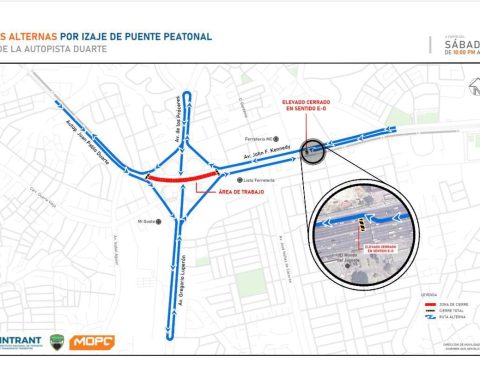Autonomous vehicles require more and more people trained in the technologies that give life to these machines to reach Mexico, according to Jody Kelman, head of the Lyft’s Autonomous Vehicles divisionwho visited Mexico to supervise the tasks of the development team that the American mobility company established in Mexico City.
Autonomous vehicles are already among us, at least in some cities around the world and under certain urban and climatic conditions. The streets of Las Vegas, Nevada, and Phoenix, Arizona, in the United States, or Beijing, in China, are the scene of the deployment of several driverless car fleets that reveal the business model with which this technology begins to spread.
The reason why Lyft decided to deploy its first fleets of autonomous vehicles in the cities of Phoenix and Las Vegas is because these cities have streets in very good condition and where there are not large numbers of pedestrians, something that represents a challenge in Mexico City.
We need more engineering talent in Mexico working on these types of problems, focusing the best of Mexican human capital on the problem of how we implement this technology,” Kelman said in an interview.
The Insurgentes Roundabout, says Kelman, is an example of the challenges faced by this industry in the country’s capital. For most vehicles, a roundabout like the one found in the middle of the largest avenue in the country makes it impossible to operate, which according to the company’s directive, could be solved by making the car look for alternative options to the roundabout. .
Level 4: the goal
Kelman’s words reveal that the technologies that power autonomous vehicles still have several limitations that prevent them from spreading in the same way that traditional vehicles have. According to their level of autonomy, that is, their ability to maneuver without the help of a driver behind the wheel, the Society of Automotive Engineers (SAE) classifies autonomous vehicles into six levels:
- Level 0: One person performs all vehicle driving functions
- Level 1: The vehicle has a single automated function, such as the cruise control systems that allow a vehicle to maintain the speed autonomously.
- Level 2: The vehicle controls its acceleration and direction, although the driver is still capable of taking control at any time.
- Level 3: The vehicle is capable of sensing its surroundings and can perform most of its functions, but still requires supervision by a driver.
- Level 4: The vehicle has all the autonomous driving capabilities under specific conditions, such as the existence of georeferenced limits.
- Level 5: The vehicle performs all driving functions autonomously in any space and under any condition, so no human assistance of any kind is required.
Despite predictions from some of the most popular autonomous vehicle manufacturers, Kelman notes that the industry is aiming for Level 4 autonomy, meaning that autonomous vehicles drive in limited areas and under specific weather conditions: noise detection systems. A good part of these devices are unreliable in rainy and foggy environments, for example.
“Tier four is what everyone in the market is aiming for right now. Level five is what sounds like the highest end of autonomy, meaning you have an autonomous vehicle parked in your driveway that can go anywhere at any time; you can use it the same way you would use any personal vehicle and it’s really important to say that nobody on the market today is trying to develop level five autonomy,” he said.
Insert inside photo. Caption: Self-driving vehicle part of the Lyft fleet. Photo: Courtesy Lyft
Business model
The current limitations of autonomous vehicles mean that the ideal that each person can have one of these machines in a particular way and that they can use it to make extensive trips, between states and even between countries, is far from becoming a reality. which means that autonomous vehicles will be complementary to vehicles driven by a person.
For Kelman, the business model that makes the most sense for this type of product is the deployment of fleets derived from alliances between companies such as Lyft and the manufacturers of this type of vehicle. While vehicle manufacturers build these machines packed with advanced technologies, companies like Lyft and Uber provide vast amounts of data on the services they offer to millions of people around the world.
“We can save manufacturers from having to do the work associated with actually implementing these vehicles in a business and that’s really where the economics of autonomous driving get interesting because a company like Lyft can make much better use of that asset. Kelman said.
Lyft itself divested its Level 5 autonomous vehicle development unit in a sale to Japan’s Toyota for around $550 million. Its biggest rival, Uber, has also sold its vehicle division to startup Aurora.
Like many other companies, Lyft has realized its status as a technology and software company to make way for autonomous vehicle manufacturers to develop the hardware for this mobility proposal. His participation in coordinating the technology used by the Ecobici bicycle sharing system is an example of the development work that the company is carrying out in the country.
“It’s about seeing how those products that are doing really well in the United States can be tropicalized and brought to Mexico City, which is also exceptional within the entire country,” Kelman said.
Without rushing a date for the deployment of this technology in the country where the company has hired more than 200 people and plans to hire 100 more next year, Kelman predicts that these new autonomous machines will help reduce road congestion in the capital. of the country at the same time that they will help it to reduce the emission of greenhouse gases.














